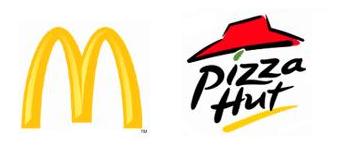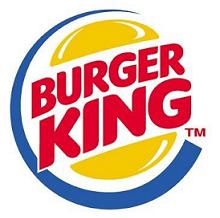Logo symbolizes a company and is a visual representation of a company's brand with the help of images, colors, fonts, shapes etc. An appealing logo is the instant brand identifier exhibited on every product of the company. It conveys the unseen message to possible clients.
More attractive logo makes brand visibility better. A creative logo catches the attention of visitors at your website for few more milliseconds than the web usually offers and can carry your business far ahead of your rivals. An effective logo is easy to recognize, even at a distance; is easy to remember; unique enough to identify its owner; suggests your service style and may also convey your distinctive selling point.
You must understand the primary rules of successful logo designing. Devise enough to come up with innovative themes and sketches and thereon digitalize your logo design. You need to see that the logo design is in tune with the business of the company and that the logo is memorable, attractive, scalable and expressible. However while designing a logo you must bear in mind that the logo does not need to speak about company’s business. For example, a logo for an auto company does not need to have a graphic depiction of a car.
Understand Clients’ Business
Crafting an effective logo demands comprehensive research and understanding of client’s expectations as these help the designer to display the company’s objectives in a much better way. Create a list of all the services or products the company provides and try to find some common ground.
A professional website designer first off understands your business aspects and needs in relation to the market scenario and plans the perfect logos for your website. Creative web designer prefers entire research work before designing the perfect logo; gathers the concept and future perspective of that logo then brings about the appealing and suitable logo for your business website.
Creating
After understanding the concept of client’s business, you need to establish an effective course for coming up with a good logo design. It’s the most irksome step but surely the most profitable one. Keep the logo simple and do not copy other’s work.
Look at what the competitors are doing. Type in some key word in Google Image Search with the word logo. For example if you were selling shoes search for ?shoes + logo?. You will be offered with a selection of rival logos for other sites. Use this to see what works and what does not. You will be drawn to the good designs and you will recognize what represents a company that sells shoes.
Review other successful logo designs
You need to have an insight about most successful logos in the industry and its specialties for crafting a winning logo. A winning logo is distinctive and just a glance at the logo would incite the customer to recognize the same. The moment you think of relishing cheese burger or hot pizza, you can imagine alphabet ‘M’ of McDonald’s and a red hat of Pizza Hut in your mind. They are simple, colorful and easy to remember and have served as effective advertising tool. Such is the affect of logos.

Developing
When you have an idea don’t over develop it. You should aim to have at least 15 to 20 rough ideas before choosing 2 or 3 to work on further. Invite criticism. Little things that you have not noticed can be very obvious to others. Look over what was said about every design and then, based on your own feelings and the comments received, decide which idea you are going to develop more. Create a slightly more refined drawing. Your logo will appear on every bit of literature your company will ever produce and you will not look professional if your logo does not look professional. Unless you’re a graphic designer, employ a professional to finish the work to a high standard.
Try to design the logo as vector graphics as these can be resized without tampering with the image quality. Also, vector graphics use lesser memory capacity in your PC.
Remember that your design may have to be very small or very large so whatever you come up with must be scalable. Consider all places your logo might appear and figure out what you will need to design for. Try conceiving of your logo as a tiny image and then as a large image.
Relevance
A logo has to be relevant somehow to the brand it represents. A graphics site with a palette, for example, is easy to understand. Apart from being directly related to the theme or being a part of the brand name, a logo can also express the general feel or outlook of a company.
Color scheme
The color combination of the logo is of prime importance. The colors of a big logo should keep up the palette with the underline background color effects. Prefer to make it pleasant and attractive to use it as the best weapon to target your market audience. Study the corporate colours and add some more tones of these colours. You should aim for a maximum of 12 but ideally you will require just one or two colours. Avoid very dark colours unless it is related to your company.
Gradients
A gradient is the subsequent color pattern when one color fades into another. This effect may look artistic and interesting, but it jumbles your logo and makes it harder to recognize at a glance or distance.

It also makes reproducing your logo more expensive or even impossible with some reproduction methods. Stay off from gradients if you want a logo that is easy to recognize and easy to remember.
Bevels, Highlights and Shadows
Beveling and highlighting, making the center of an object look raised while the edge appearing “drop down”, muddles an images appearance just as gradients do. Effects look artistic and more fascinating, but it makes the logo harder to see at a glimpse or distance, and harder to commit to memory.

Shadows, especially drop shadows, are bad for a logo. They add artsy detail that only serves to confuse the image. In logo design, too much detail results in a bad logo.
Tagline
A good and effective tagline should be brief and clear, usually including from 3 to 7 words. This will avoid verbosity and will ensure your audience understand what your company does or offers. A great tagline will have a personality all its own and link with the consumer in some sort of emotional way that makes it memorable. For example, Nike's tagline-' Just Do It' instigates their buyers to take action to accomplish their goals; while Apple Inc.' s tagline-'Think Different' reflects the personalities of both their products and their clients. For good or for bad, your tagline has to be remembered.
Fonts
Do not use a font that is hardly readable. To impart a professional look to your logo, you should use appropriate fonts, which are easily available online. Update your font folder systematically and try out with font types, font colors, font formatting etc. to come up with attractive themes and designs.
A grave mistake would be putting a font on a background whose color does not contrast enough with the font color, resulting in inscription that doesn’t stand out enough. Opt for softer appeal and use low-contrast and high-contrast colors.
Shape
An effective logo also needs a basic geometric shape that helps identify the logo when someone is too distant to read the words. Along with a basic two color scheme, a shape in a logo makes that logo very easy to recognize. Think of Burger King’s split yellow sphere with a blue swoosh around the sphere. They create basic shapes and color patterns that are easy to distinguish as soon as the sign comes into view.

Even though these requisites are rather easy to explain, it is actually very hard to generate a winning logo. Overall, you can sum up these design points by just reminding yourself to keep your logo simple. Immoderate detail may make you feel more proficient about your design artistry, but it won’t result in a logo that achieves the most basic task a logo is meant for.